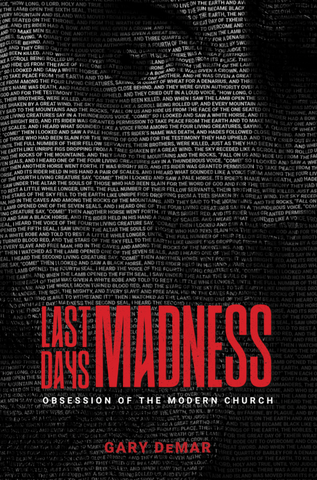Please help us reach $10K in donations for a matching grant
Bible Prophecy Under the Microscope-Episode 53
So much of modern eschatology, especially Dispensationalism, rely on four verses (24–27) in Daniel 9 to make their system hold together.
It’s been said that necessity is the mother of invention. The “gap” that has been placed between the sixty-ninth and seventieth weeks of Daniel’s prophecy was created because it was needed to make the dispensational hermeneutical model work. Nothing in the text of Daniel 9:24-27 implies a “gap.”
Dispensationalists need to insert a period of time between the feet and the toes of Nebuchadnezzar’s statue (Dan. 2:40-43) and between the sixty-ninth and seventieth week of the prophecy outlined in Daniel 9:24-27 in order to make the dispensational system work. A reading of both passages will show that there are no gaps of time. What we find in dispensational writers is a hermeneutical method whereby the theological system determines what a text should say to support the theological system. Dispensationalists are trapped in an endless loop of circular reasoning.
One dispensational writer, offering no exegetical evidence for the inclusion of a gap between the feet and toes of the colossus of Daniel 2—a gap that indicates a period between the sixty-ninth and seventieth weeks of Daniel 9:24-27—states, “At some point in this symbolism [of Nebuchadnezzar’s statue] an extended gap in time must be fixed, because by verse 44 the interpretation describes the future day of Christ’s millennial reign, as will be seen.”[1] Again, no such gap is intimated by a reading of the text, or by subsequent New Testament interpretative evidence.

Last Days Madness
In this authoritative book, Gary DeMar clears the haze of "end-times" fever, shedding light on the most difficult and studied prophetic passages in the Bible, including Daniel 7:13-14; 9:24-27; Matt. 16:27-28; 24-25; Thess. 2; 2 Peter 3:3-13, and clearly explaining a host of other controversial topics.
Buy NowSo much of modern eschatology, especially Dispensationalism, rely on four verses (24–27) in Daniel 9 to make their system hold together. This is suspect enough, but then to make it work chronologically, they need to insert huge gaps of years. Daniel’s timebound prophecy that uses “weeks of years” to indicate when the time would be near is made useless by adding a gap of thousands of years.
Click here for today’s episode
Click here for all episodes of Bible Prophecy Under the Microscope
[1] Leon J. Wood, Daniel: A Study Guide Commentary (Grand Rapids, MI: Zondervan, 1975), 39-40.

